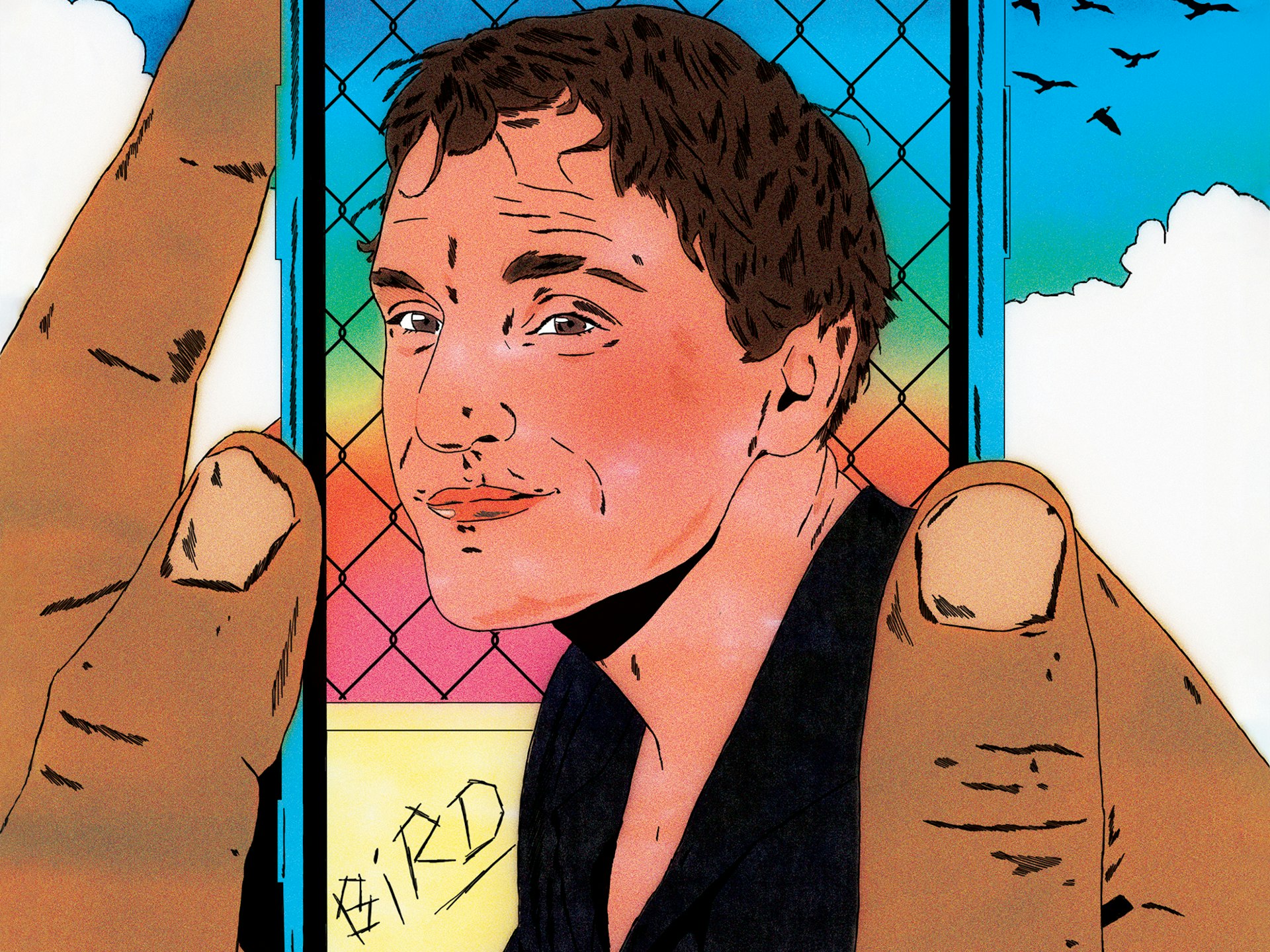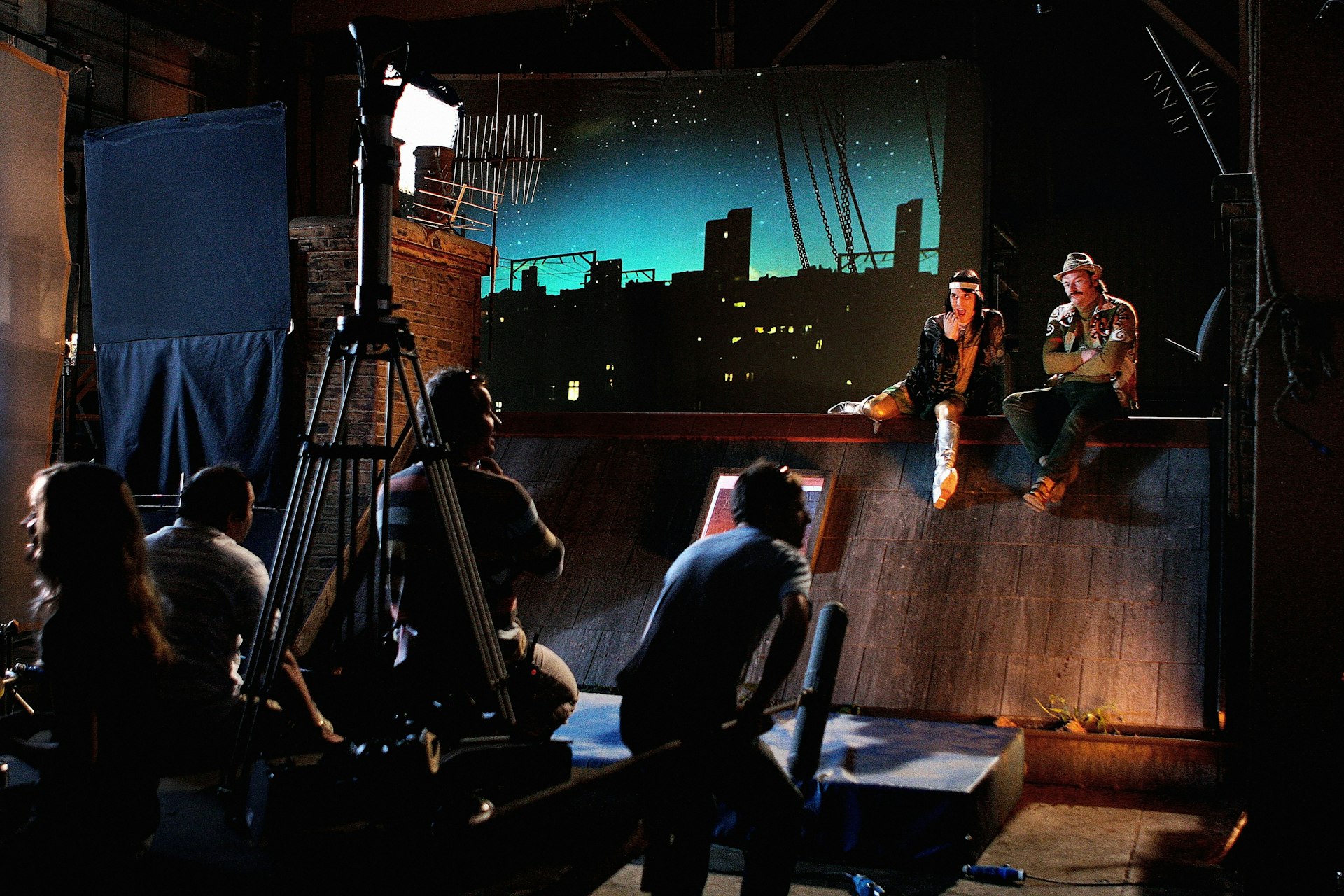The Horrors' Tom Furse on his compilation of exotica and obscurities
- Text by Alex Taylor
- Photography by Antonio Curcetti

Tom Furse is sitting in a room where water is dripping through the ceiling. He’s in transition until he moves into a new place and the leaky-ceilinged room is his home for now. The image of The Horrors’ keys and synth player relaxing in those four damp walls is about as far away from the sound of his newly curated album, Tom Furse Digs, as a mental picture can get.
The album is a celebration of Furse’s love of exotica, jazz and surf music from the late ‘50s and ‘60s. The genre most thoroughly explored, exotica, first came about in 1957 from the Martin Denny album of the same name. Musicians like Denny, Les Baxter and Arthur Lyman were being played in living rooms across suburban America as families were taken sonically to places they could never afford to go. When Furse was curating the album, he did the same thing. By visualising himself in a different place and time, he’s crafted a cohesive set of songs that you should have to wear a really tacky hawaiian shirt and a shit straw hat to listen to.
“When I was pulling out songs for the album, I had this imaginary film in my head,” Furse explains. “I imagined I was looking down this road with a beach on the right and just some really wholesome kids playing. It’s a little like Endless Summer meets the The Trip and, when I think about it like that, the album’s meant to soundtrack that mental image.”
Beaches and wholesome kids aside, the album wouldn’t have come into being had the Southern Library of Recorded Music not reached out to Furse. They hoped that he’d be keen on flicking through their archives, searching for the best tracks to fit the mood. He was all too willing. The SLRM are a small label that provide soundtracks and backing music for any purpose, this is why the visualisation is so important to him. “I think it’s really core,” he says. “Even having a vague visual concept. It’s something that I’ve always done and it’s much easier to create a sound to pictures. You need to try and paint pictures of people.”
Pulling super fun records out of a small office in Fulham, west London, and listening to them one by one in the hopes of creating something wasn’t a quick job, though. The album took five years to put together. It wasn’t a constant effort from him, the project was something he was always happy to work on as well as his other commitments, too. “When I started researching for the album, there was nothing.” This might be because a lot of the tracks are about as obscure as it gets: it’s the kind of stuff that you couldn’t hope to find if you were actually looking for it. “I noticed some of the most significant records were missing,” Furse says, the crate digger in him showing its face. “There are just certain ones you can’t find. I picked up a lot of the ones I have now for next to nothing in the States but getting the rights took time. Some of the people on the album are dead.”
Now the album is finished, it’ll be released late August both online and on 12” vinyl. If this takes off, expect Tom Furse to keep making music as sunny as this long after the credits roll.
Tom Furse Digs by Tom Furse and Universal Publishing Production Music is out now on Lo Recordings.
Latest on Huck

Three decades behind the scenes of the music industry
Eddie Otchere’s ‘Spirit Behind the Lens’ is a story of music and culture that crosses and transcends borders.
Written by: Isaac Muk

Barry Keoghan, Franz Rogowski and Andrea Arnold on ‘Bird’
The new issue of Little White Lies brings Andrea Arnold’s sixth feature to life with a thematic voyage down the Thames estuary.
Written by: Maisy Hunter

“A party is a microcosm of a nation”: Caleb Femi on the decline of the house party
To celebrate the publication of his new collection ‘The Wickedest’, Isaac Muk caught up with Femi to talk more about the work, the future of the shoobs, and discuss why having it large on a Saturday night should be cherished.
Written by: Isaac Muk

Celebrating 20 years of The Mighty Boosh
A new exhibition takes a look behind the scenes of the iconic show two decades after its BBC3 premiere.
Written by: Isaac Muk

We Run Mountains: Black Trail Runners tackle Infinite Trails
Soaking up the altitude and adrenaline at Europe’s flagship trail running event, high in the Austrian Alps, with three rising British runners of colour.
Written by: Phil Young

The organisation levelling the playing field in the music industry
Founded in 2022, The Name Game is committed to helping female, non-binary and trans people navigate the industry.
Written by: Djené Kaba